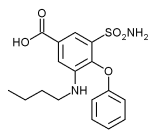Use of herbal medications has been steadily increasing in the United States, from 2.5% in 1990 to 12% in 1997; consultations with herbal medicine practitioners increased from 10.2% to 15.1% in the same period. (1-4)
Herbal medicines include dietary supplements that contain herbs, either singly or in mixtures. Also called botanicals, herbal medicines are plants or plant parts used for their scent, flavor, and/or therapeutic properties. Since herbal medicines are classified as dietary supplements, there are no U.S. Food and Drug Administration (FDA) regulations regarding accuracy of active ingredients content or efficacy and safety of active ingredients. (2)
Health care in older adults focuses on chronic disease: Older adults typically manifest one chronic disease for each decade past age 50 and most chronic diseases are treated with multiple drug therapy.5 This means the average older adult takes 5 prescriptions each day.
The addition of herbal medicines to a program of multiple drug therapy holds the potential for herb-drug interactions. (6,7) The lack of quantitative data on herbal medications, however, makes it difficult to predict the potential for interactions.
The seven herbal medicines most sold in the United States are8
1. Ginkgo biloba
2. St. John's wort
3. Ginseng
4. Kava
5. Saw palmetto
6. Garlic
7. Echinacea.
Efficacy information and drug interaction data is available for the first five. (8) Efficacy claims for garlic and echinacea are not supported. (1,2,6) This article, the third in a series (see April 2005 for Ginkgo biloba, July 2005 for St. John's wort), will discuss specific proven efficacies and, where known, mechanisms of action for ginseng. Subsequent articles will discuss kava and saw palmetto. Documented drug-herb interactions will be presented.
Ginseng (Panax ginseng)
Ginseng has been recommended for a wide variety of uses including amelioration of physical and mental performance, but there is little evidence of its efficacy. (1,6,7,9) Evidence shows that it has some value in infection resistance, reducing stress, lowering cholesterol and blood sugar levels, and has a modest estrogen-like effect on women. (8)
Pharmacologic actions. Commercial preparations have been standardized to its purported active component ginsenoside. One variety, the eleutherosides, has been found to result in falsely elevated levels of serum digoxin, (10) due to a ginseng effect on the assay.
Ginseng exerts a strengthening effect while raising physical and mental capacity for work. These properties have been defined as an "adaptogenic effect" or a nonspecific increase in resistance to the noxious effects of physical, chemical, or biological stress.
The panaxosides, or ginsenosides, may alter the activity of hormones produced by the pituitary, adrenal, or gonadal tissue. The consequences of these effects are not known. (8)
Limited evidence subjectively describes some of the pharmacologic effects of the panaxosides. For example, ginsenoside Rb-1 demonstrates CNS activity, may protect against the development of stress ulcers, and accelerates glycolysis and nuclear RNA synthesis. Ginseng may potentiate the normal function of the adrenal gland, possibly having some "antistress" activity. (8)
Five glycans, collectively called panaxans, show strong hypoglycemic activity and have been isolated from the root. Ginsenoside Rg-1 given to postoperative gynecologic patients caused a greater increase in hemoglobin and hematocrit levels among treated women than among placebo-treated controls. Serum protein and body weight also increased to a greater degree in the treatment group. (8)
Dosage and administration. Common dose is 100 mg of ginseng extract (4% ginsenosides) by mouth once or twice/d. (8)
Contraindications. Patients on anticoagulant therapy should consult a physician before taking ginseng. (6) Diabetic patients taking ginseng should monitor blood glucose regularly; hypoglycemic effects have been reported. (8)
Adverse effects/toxicology. Ginseng may depress or stimulate the CNS. (6) Nervous excitation induced by ginseng use reportedly diminishes over time or with downward dose adjustment. Difficulty concentrating has been reported following long-term use. Diabetic patients should use ginseng with caution because of the hypoglycemic effects and associated difficulty in managing blood sugar levels. (8)
Reported drug interactions are detailed in the Table.
Conclusion
Physicians are reminded to ask their patients about any herbal and dietary supplements that they might be taking. It might help to have patients fill out a chart to keep on file that lists this information, including the frequency and reasons for using supplements. Refer to the chart at www.geri.com. (Log onto www.geri.com, scroll down the left hand navigation bar to Patient Handout and print out the "Tracking your meds" handout to help patients understand the information they need to provide physicians regarding the dietary supplements they take.)
References
(1.) Ang-Lee MK, Moss MK, Yuan CS. Herbal medicines and perioperative care. JAMA 2001; 286(2):208-16.
(2.) Ernst E, Pittler MH. Herbal medicine. Med Clin North Am 2002; 86(1):149-61.
(3.) Astin, JA. Why patients use alternative medicine: Results of a national study. JAMA 1998: 279(19):1548-53.
(4.) Eisenberg DM, Kessler RC, Foster C, Norlock FE, Calkins DR, Delbanco TL. Unconventional medicine in the United States. Prevalence, costs, and patterns of use. N Engl J Med 1993; 328(4)246-52.
(5.) Bressler R, Bahl JJ. Principles of drug therapy for the elderly patient. Mayo Clin Proc 2003: 78(12):1564-77
(6.) Ernst E. The risk-benefit profile of commonly used herbal therapies: Ginkgo, St. John's wort, Ginseng, Echinacea, Saw Palmetto, and Kava. Ann Intern Med 2002; 136(1):42-53.
(7.) Miller LG. Herbal medicinals: Selected clinical considerations focusing on known or potential drug-herb interactions. Arch Intern Med 1998; 158(20):2200-11.
(8.) David S. Tatro, ed. Drug Interaction Facts: Herbal Supplements and Food. Saint Louis, MO; Facts and Comparisons, A. Walters Kluwer Company; 2004. Also available online at: www.factsandcomparisons.com.
(9.) Schmucker DL. Liver function and phase I drug metabolism in the elderly: A paradox. Drugs and aging 2001; 18(11):837-51.
(10.) McRae S. Elevated serum digoxin levels in a patient taking digoxin and Siberian ginseng. CMAJ 1996; 155(3):293-5.
Rubin Bressler, MD
Dr. Bressler is professor of medicine and pharmacology, University of Arizona Health Sciences Center and the Sarver Heart Center, Tucson, and serves on the Geriatrics Editorial Advisory Board. Disclosure Dr. Bressler's works are supported by the Sarver Heart Center and the Brach Foundation.
COPYRIGHT 2005 Advanstar Communications, Inc.
COPYRIGHT 2005 Gale Group



